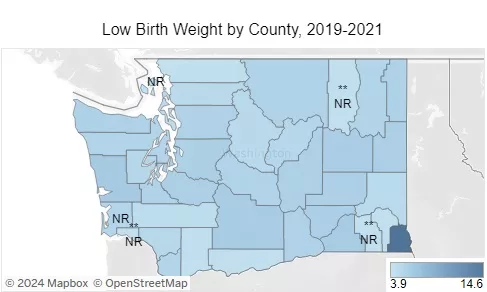
OLYMPIA, WA –The Washington State Department of Health’s Office of Family and Community Health Improvement released a new, interactive Perinatal Dashboard that provides insights into the experiences of pregnancy, birth, and parenting in Washington.
The new dashboard includes data on:
- Health conditions in pregnancy.
- Birth outcomes, including preterm births and low birth weights.
- Substance use and pregnancy.
- Postpartum and parenting.
- Pregnancy experience.
“The Perinatal Dashboard allows us to share information directly with Washingtonians about trends we’re seeing in pregnancy and birth outcomes among communities across the state,” according to Lacy Fehrenbach, Chief of Prevention, Safety, and Health. “Making these data easily accessible to the public is crucial to our work towards healthier and more equitable pregnancies, births, and lifelong health outcomes for all parents and children in Washington.”
From DOH:
Perinatal Dashboard data comes from birth certificates and Washington’s Pregnancy Risk Assessment Monitoring System. These data shed light on patterns and trends in perinatal health, while providing critical context for learning how to best serve Washingtonians during and after pregnancy, as well as their infants and families. Data are broken down by age, race/ethnicity, Medicaid status, and geography to highlight differences and disparities in key indicators of maternal and child health. This information aims to inform research, programming, and policy.
DOH’s new dashboard complements existing state resources for families, such as Watch Me Grow Washington, which is a program that mails health and safety information to all parents and caregivers of children from birth to 6 years old in Washington, as well as the Women, Infants, and Children (WIC) Nutrition Program, and numerous other resources that can be found on the You and Your Family section of DOH’s website.
The DOH website is your source for a healthy dose of information. Find us on Facebook, Instagram, and follow us on X (formerly Twitter). Sign up for the DOH blog, Public Health Connection.

